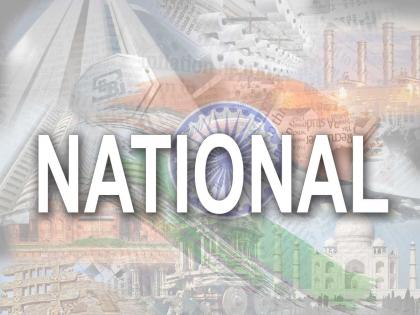Gurugram gasps for breath as civic officials turn blind eye
By IANS | Published: October 30, 2019 08:46 PM2019-10-30T20:46:05+5:302019-10-30T20:55:11+5:30
While the National Capital Region (NCR) is facing a high degree of toxic air and smog, Gurugram, the millennium city, is counted among the worst polluted cities in the world.

Gurugram gasps for breath as civic officials turn blind eye
Gurugram district officials and civic agencies are showing an apathetic attitude towards saving the environment.
The atmosphere in Gurugram fell under the dangerous zone with PM 2.5 level and is likely to remain the same for the next few weeks. Experts believe that there are multiple factors such as stubble burning in the adjoining districts of Haryana, Western Uttar Pradesh and Punjab responsible for the deterioration of air quality in Delhi and adjoining cities.
Kamal Narayan, CEO, Integrated Health and Wellbeing Council said: "Air pollution impact in Delhi is multi factorial. Delhi is geographically positioned in a land locked area, with less wind movement than the coastal regions. Apart from huge population density, which triggers high human activity and greater use of personal vehicles, stubble burning in neighbouring states increases pollution levels drastically during winter. Concentration of industries in the National Capital Territory also has its impact."
Dr Ansaj Singh, the deputy commissioner of Sonepat district said: "we have imposed 4 times penalty to farmers found guilty of burning crops in their agricultural land. We have taken a meeting of village heads (Sarpanch) and directed them to keep an eye on farmers."
Besides crop burning, another threat is posed by duststorms emanating from the Thar Desert of Rajasthan which reach the NCR. This is happening here in Haryana due to the non eco-friendly policies of the state governments responsible for such adverse conditions.
According to officials, illegal mining in the Aravalli Mountains range in Rajasthan and the Manohar Lal Khattar government's decision to regularize mining in districts like Bhiwani and Mahendragarh are added factors.
According to a report of the Central Pollution Control Board, the quality of air has worsened in Delhi post Diwali with officials continuously recording fine polluting particles PM 2.5 and PM 10 respectively above 370 and 420 microgram per cubic meter in Delhi and other NCR cities.
"The rise of air pollution in Delhi and NCR due to changing season with very low speeds of winds, stubbles burning with no vent out as we are mostly surrounded by concrete jungle. This pollution is too dangerous for patients with lung diseases like COPD, asthma and patients suffering from allergies and it may lead to acute exacerbation of respiratory diseases. There are also more chances of getting viral and bacterial pneumonias in this season," said Dr. Piyush Goel, Head- Pulmonologist, Columbia Asia Hospital Gurugram.
Dr. Sandeep Chadha, Consultant Obstetrician & Gynaecologist, Motherhood Hospital, Noida said: "From respiratory issues to cognitive decline, poor air quality has adverse health effects. Sometimes, it can even lead to death. Many researches suggest that air pollution is particularly harmful to unborn children during pregnancy."
"As per 'State of Global Air 2019' study, it has been reported that the life on average of a South Asian child growing up in current high levels of air pollution will be shortened by two years and six months. Exposure to polycyclic aromatic hydrocarbons (PAHs), the most common particle pollutants, has been linked to premature birth, low birth weight and, in extreme cases, infant mortality. It's also been associated with greater risk of autism and obesity later in childhood," he said.
( With inputs from IANS )
Open in app